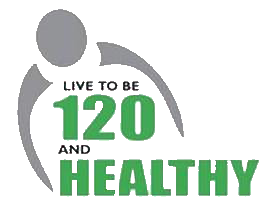Tai Chi is a form of Chinese martial art and is mainly practiced for health benefits which include ways of dealing with stress and tension. There are two basic types of martial arts, the hard type and the soft type. Tai Chi is a type of soft martial arts and is similar to meditation and emphasizes complete relaxation. The characteristics are soft, slow and flowing movements of force instead of brute strength. The movements must be executed slowly and precisely.
History of Tai Chi
The history of Tai Chi is shrouded in the mists of Oriental antiquity. While it is difficult to differentiate between fact and myth, It can trace its roots back to ancient India, in which yoga was practiced. Yoga made its way into China and became what is known as Saolin Chuan. Chuan means a type of boxing. A Taoist monk named Chang Sang Feng in the 13th century developed the art of Tai Chi. This form of soft martial arts thereafter became associated with different families in the region. These various family names designated different styles to Tai Chi. A young man named Yang studied martial arts and created the Yang style. This is the most traditional and common style practiced today.
Psychological Benefits of Tai Chi
With obvious physical benefits, this type of martial art offers psychological benefits as well. Being similar to meditation and its intention is to help one understand oneself better and deal with others in a more effective manner. Tai Chi will place emphasis on learning to control oneself. This control can be effectively used in the real world.
Six Health Benefits
China has long recognized Tai Chi for its benefits on one’s health and its curative and restorative properties after an illness or injury. The western world is more accepting of It as a valuable source of self healing and restoration. The Chinese perspective states that all sickness and illness results from an imbalance of life energy. According to Chinese tradition, to regain one’s wellbeing the energy flow must be corrected. Healing is based on body-mind medicine and rebalancing of the Chi energy. Tradition believes that imbalances and irregularities can be corrected if the correct flow of energy is encouraged.
Tai Chi on Pain Control
Life force energy is said to determine one’s health and well being. This is the role of Chi in your life. When the Chi is blocked or stagnated this leads to various diseases, pains and aches in the body. The aim of Tai Chi is to allow the Chi energy to flow freely by moving your body in an energetic way. Tai Chi is known to assist in pain control, including abdominal discomfort, backache, colic and limb pain. The pain is sometimes linked to tension. Tai Chi promotes relaxation and helps assist in pain control.
Mind, Memory and Concentration
Tai Chi is known to relax the muscles of the neck and shoulder, which normalizes one’s upper torso. This movement expands the chest and relaxes the throat. The rotary movements relax the lower and mid spinal muscles, the lower rib cage and diaphragm. The diaphragmatic movement helps readjust the spinal posture, which increases lung expansion. The movements also increase the flow of oxygen into the body clearing the respiratory system of accumulated mucus and inhaled particles. Improved oxygen flow enhances the brain function and adds more vitality to mind, memory and concentration.
(adsbygoogle = window.adsbygoogle || []).push({});
Bowel and Digestive System
Tai Chi helps the diaphragm move correctly. This stimulates and massages the abdomen and pelvic organs, ensuring digestive and bowel problems are not unduly caused. Tai Chi encourages proper diaphragmatic breathing, which may reduce or eliminate certain digestive and bowel disorders.
Balance and Falling
The areas of balance and falling relates mostly to senior adults. This area is important because in older adults fall-related injuries can lead to death. The most serious of these is hip fracture. Generally, older adults seeking treatment for hip fracture never recover to their normal function levels. Tai Chi movements are deliberate and slow, where one shifts the body weight from one leg to another in perfect coordination with upper body movements. This not only challenges balance, it also helps improve it.
Combating Stress
Life in general is stressful for people of all ages. People who practice It, did report that mental control was an immensely satisfying health benefit. Individuals who practice It, must have proper breathing, movements and mental concentration. Tai Chi becomes the perfect distraction you require to get away from a stressful lifestyle. The mind-body energy deserves attention. When one practices It, there is a sense of inner peace and calm, which is indisputable.
Strength and Endurance
A recent study was done on adults in their 60s and 70s. These adults practiced It for 12 weeks at a 60 minute class and were subjected to various physical fitness tests to check for muscular strength, balance, endurance and flexibility. Significant improvements were found after six weeks in endurance and flexibility, and these elements had increased further at the end of 12 weeks. The study concluded that It plays a vital role in improving upper and lower body balance, strength, endurance and flexibility in older people.
This endeavor requires only a few feet of space, either indoors or outdoors. You can enjoy it in a group or alone. This practice is fascinating, fun and convenient. Practicing it early in the morning is refreshing. Its not thought of as a workout, but more as a recess. It is self paced, gentle and non-competitive and does not require you to have good health to begin. The exercise is immensely satisfying. The experience is fulfilling, whether you are a late bloomer or a professional in soft martial arts. The slow, gentle and flowing movements will bring out a sense of deep and profound well being. It offers respite from outrageous daily hassles, tension and stress.
http://www.Selfhelpforme.com is a great resource for all Self help products, idea tips tricks, and things that can greatly improve the quality of your life.




